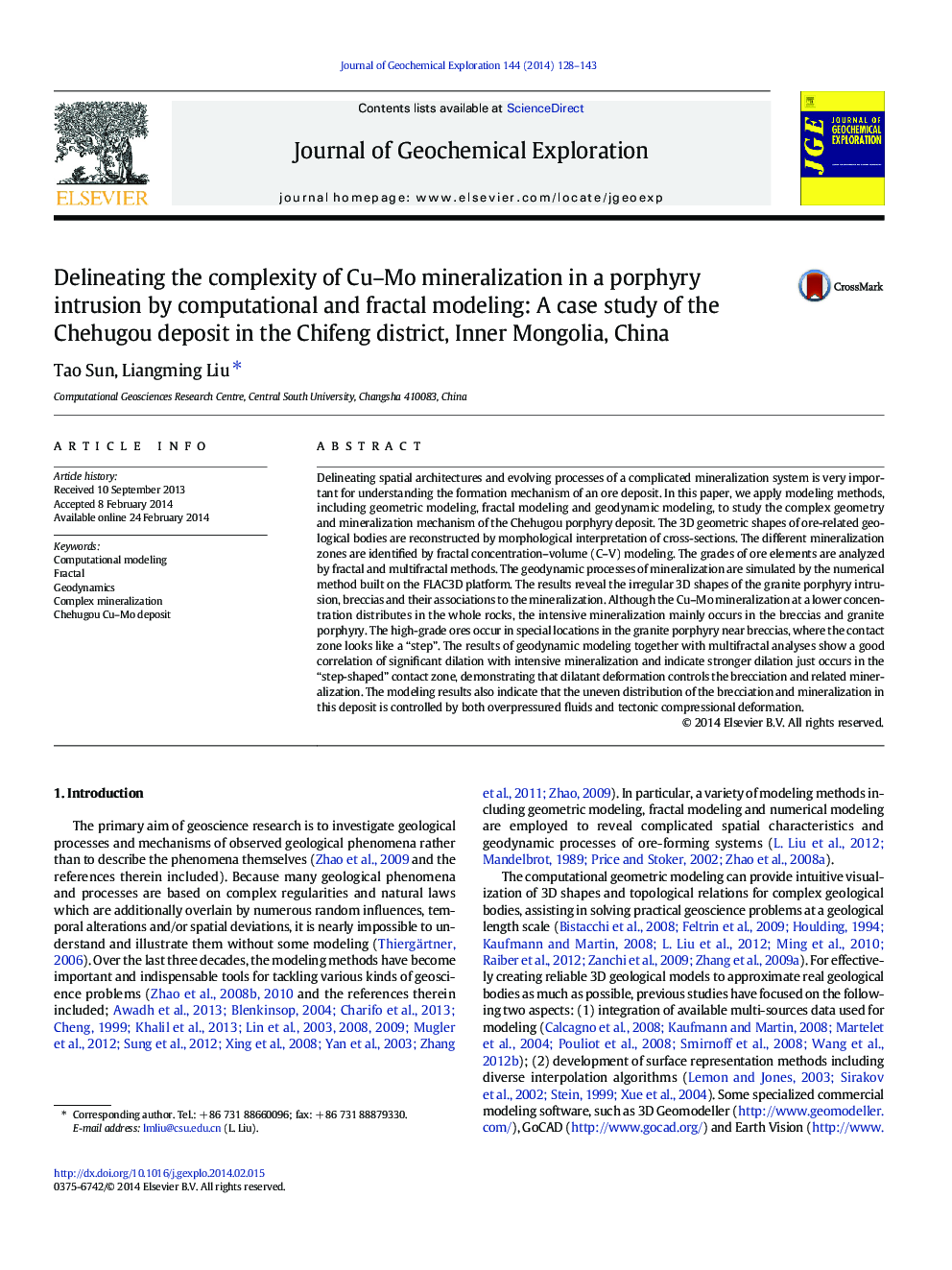| Article ID | Journal | Published Year | Pages | File Type |
|---|---|---|---|---|
| 4457261 | Journal of Geochemical Exploration | 2014 | 16 Pages |
•Combined modeling considers both spatial and evolving features of an ore deposit.•Complex mineralization pattern is clarified by fractal models.•Coupled geodynamic processes are simulated by numerical computation.•Favorability for mineralization is revealed by different modeling results.
Delineating spatial architectures and evolving processes of a complicated mineralization system is very important for understanding the formation mechanism of an ore deposit. In this paper, we apply modeling methods, including geometric modeling, fractal modeling and geodynamic modeling, to study the complex geometry and mineralization mechanism of the Chehugou porphyry deposit. The 3D geometric shapes of ore-related geological bodies are reconstructed by morphological interpretation of cross-sections. The different mineralization zones are identified by fractal concentration–volume (C–V) modeling. The grades of ore elements are analyzed by fractal and multifractal methods. The geodynamic processes of mineralization are simulated by the numerical method built on the FLAC3D platform. The results reveal the irregular 3D shapes of the granite porphyry intrusion, breccias and their associations to the mineralization. Although the Cu–Mo mineralization at a lower concentration distributes in the whole rocks, the intensive mineralization mainly occurs in the breccias and granite porphyry. The high-grade ores occur in special locations in the granite porphyry near breccias, where the contact zone looks like a “step”. The results of geodynamic modeling together with multifractal analyses show a good correlation of significant dilation with intensive mineralization and indicate stronger dilation just occurs in the “step-shaped” contact zone, demonstrating that dilatant deformation controls the brecciation and related mineralization. The modeling results also indicate that the uneven distribution of the brecciation and mineralization in this deposit is controlled by both overpressured fluids and tectonic compressional deformation.
